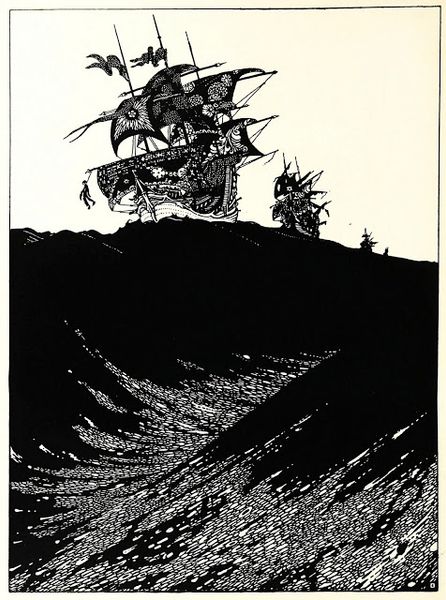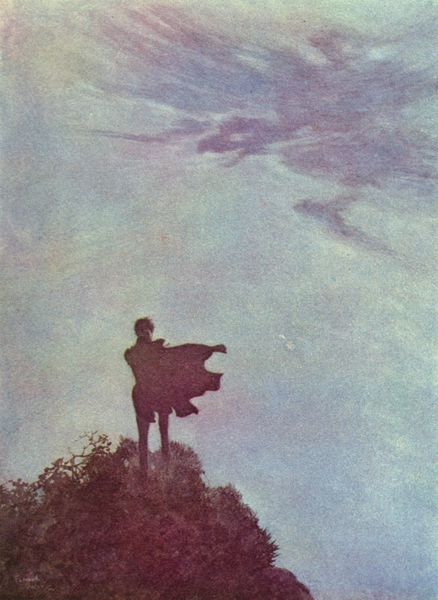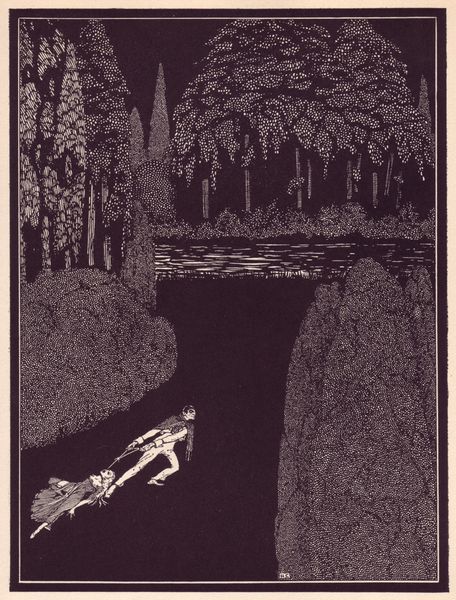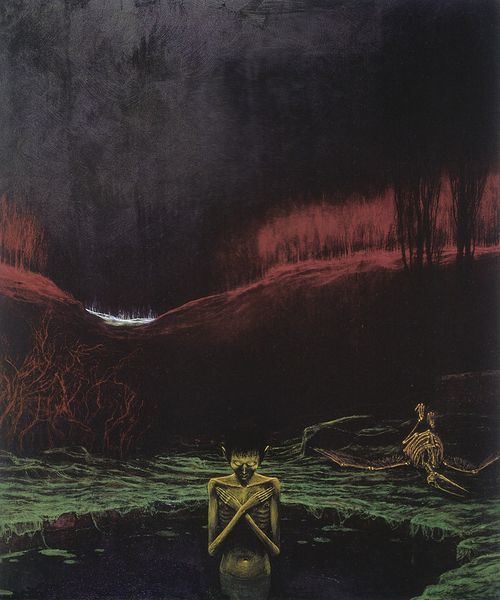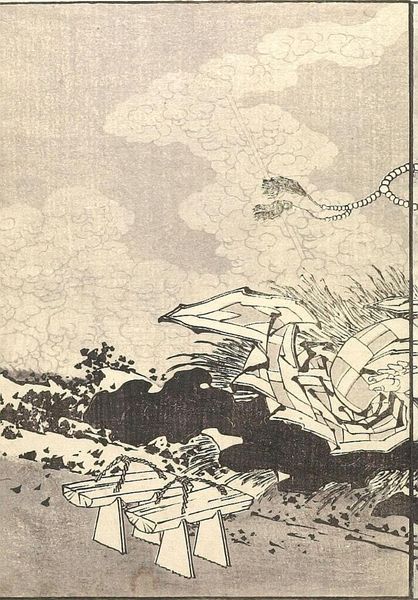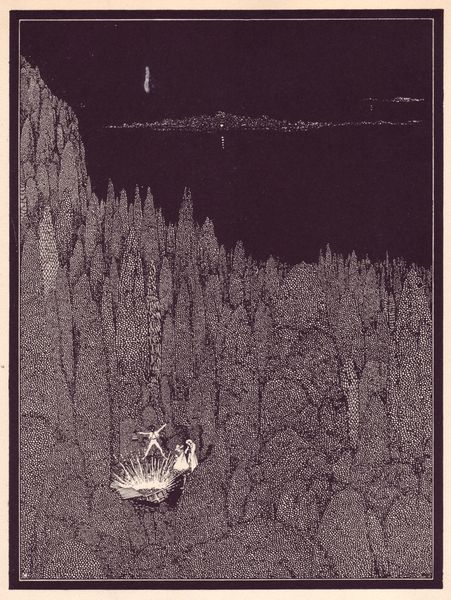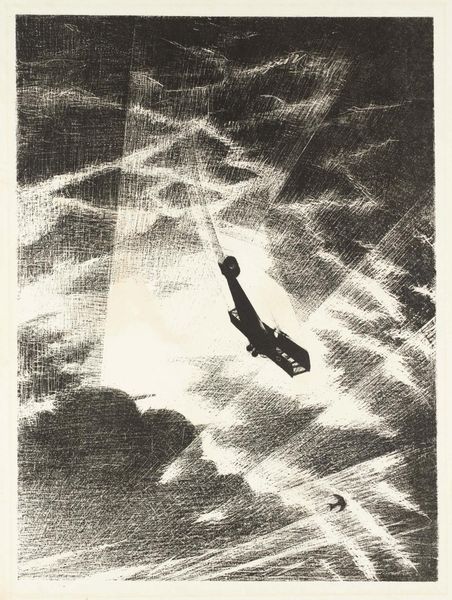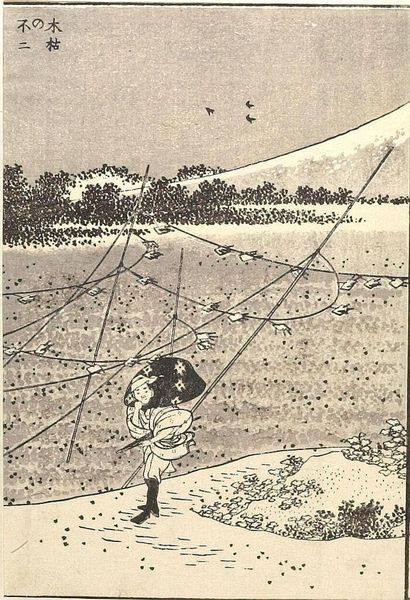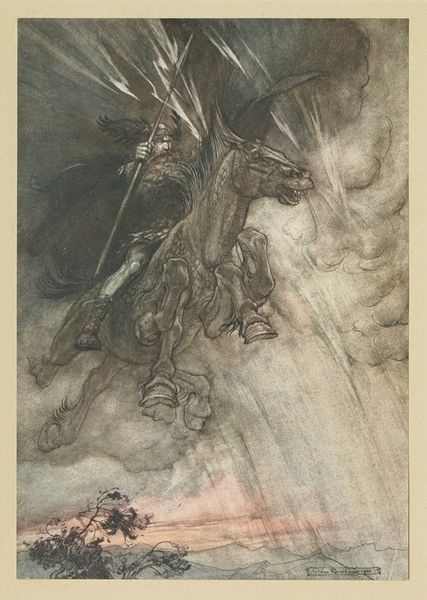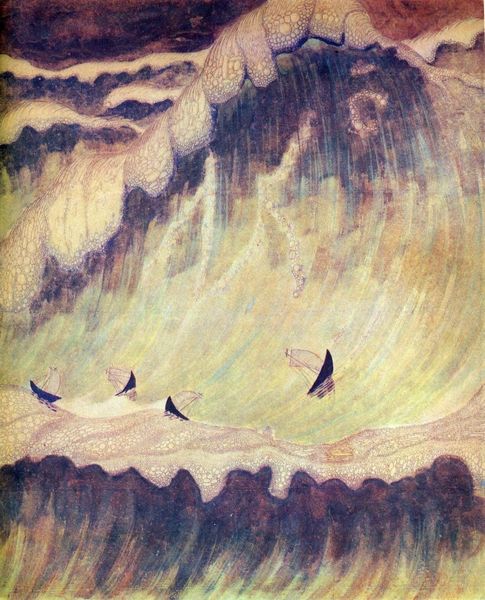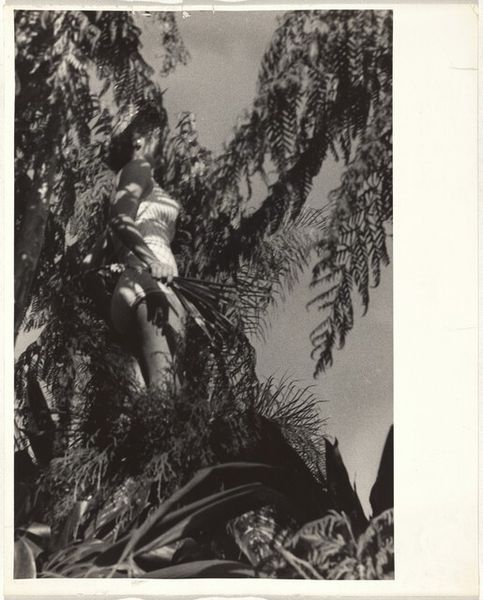
watercolor
#
landscape
#
watercolor
#
symbolism
Copyright: Public domain
Editor: So, this is Kittelsen's "September," made in 1890, using watercolor. The landscape feels very muted, almost melancholy, until your eye is drawn to that dragonfly, sharp against the white paper. How do you read this work? Curator: Well, think of the dragonfly first. Dragonflies are liminal creatures, connected to both water and air, the conscious and unconscious. The Northern imagination often connected them to souls, or even fairies. Here, one could read its inclusion alongside a quiet landscape as representing a transitional state – the close of summer, the whisper of winter approaching. Do you see it also in the colors? Editor: Definitely, the palette feels significant now. The sepia tones are suggestive of memory and the fading light is suggestive of endings. So the dragonfly represents, in a way, transformation? Curator: Precisely! Transformation and transition. In art, context informs symbol. Kittelsen wasn't merely painting a pretty picture. What happens in September? Decay becomes beautiful. Can you see that here? That bittersweet moment right before everything changes, and things become lost. He's using that single, almost vibrantly alive dragonfly as a striking contrast to all of the implied decay around it. Does that suggest something to you? Editor: It highlights that life persists. There’s a tension between stillness and the vibrancy of nature...or maybe the potential for continued vibrancy despite the stillness. I didn't see all that when I first looked at this, but it's a lot more layered than just a landscape study. Curator: And how does this resonate with you now, considering our own cultural moment? What "Septembers" are we facing, both personally and collectively, and what symbols of resilience can we identify? Editor: It’s interesting to think of it as a kind of harbinger of change. I suppose a lot of art is like that, a little seed of recognition for whatever’s coming. Curator: Precisely! Kittelsen offers more than beauty; he delivers a cultural memory, a space for self-reflection.
Comments
No comments
Be the first to comment and join the conversation on the ultimate creative platform.
